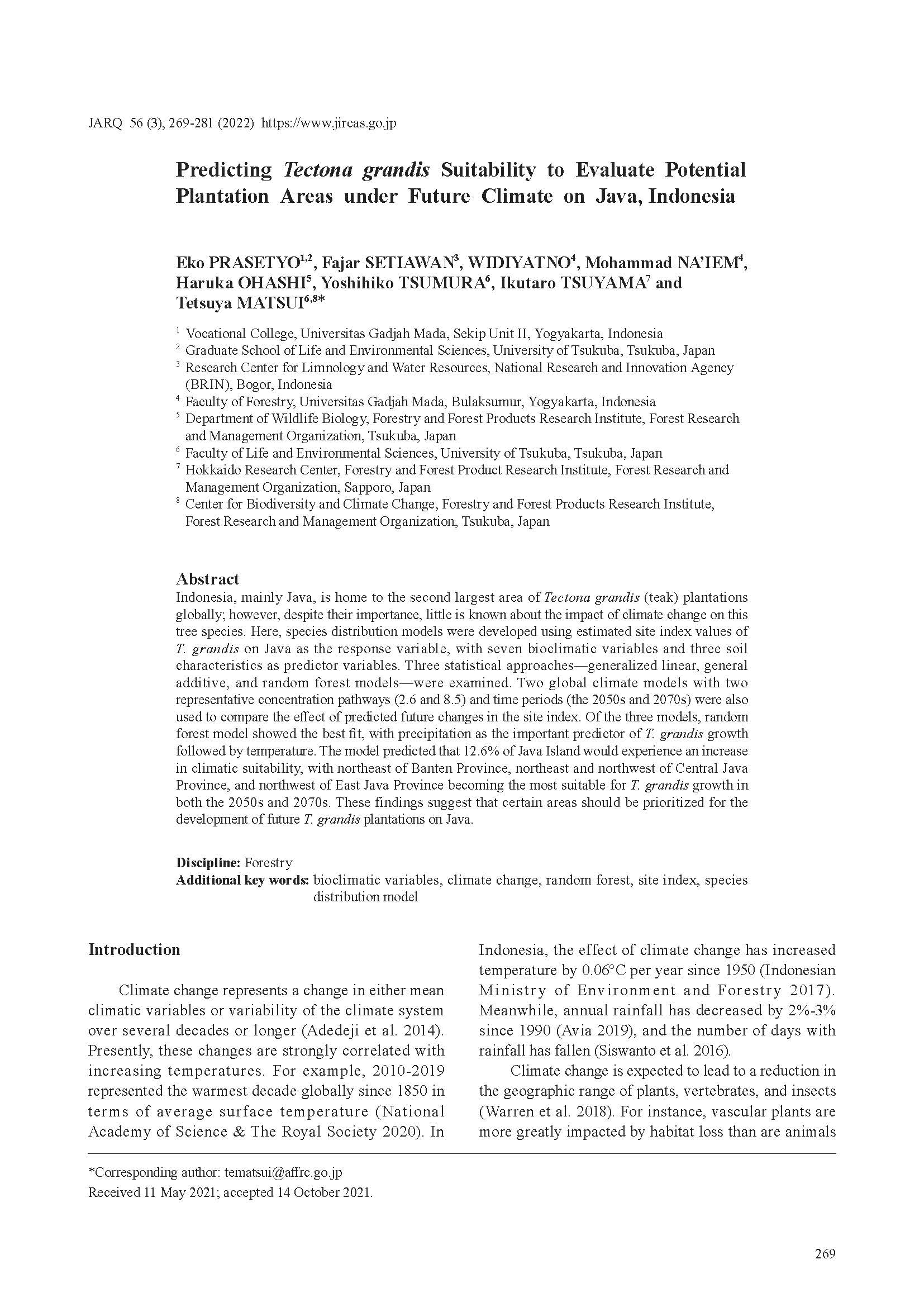Predicting Tectona grandis Suitability to Evaluate Potential Plantation Areas under Future Climate on Java, Indonesia
Japan Agricultural Research Quarterly
| ISSN | 00213551 |
|---|---|
| NII recode ID (NCID) | AA0068709X |

Full text
jarq56-3_269-281.pdf3.86 MB
Indonesia, mainly Java, is home to the second largest area of Tectona grandis (teak) plantations globally; however, despite their importance, little is known about the impact of climate change on this tree species. Here, species distribution models were developed using estimated site index values of T. grandis on Java as the response variable, with seven bioclimatic variables and three soil characteristics as predictor variables. Three statistical approaches—generalized linear, general additive, and random forest models—were examined. Two global climate models with two representative concentration pathways (2.6 and 8.5) and time periods (the 2050s and 2070s) were also used to compare the effect of predicted future changes in the site index. Of the three models, random forest model showed the best fit, with precipitation as the important predictor of T. grandis growth followed by temperature. The model predicted that 12.6% of Java Island would experience an increase in climatic suitability, with northeast of Banten Province, northeast and northwest of Central Java Province, and northwest of East Java Province becoming the most suitable for T. grandis growth in both the 2050s and 2070s. These findings suggest that certain areas should be prioritized for the development of future T. grandis plantations on Java.
| Date of issued | |
|---|---|
| Creator | Eko PRASETYO Fajar SETIAWAN WIDIYATNO Mohammad NA’IEM Haruka OHASHI Yoshihiko TSUMURA Ikutaro TSUYAMA Tetsuya MATSUI |
| Subject | bioclimatic variables climate change random forest site index species distribution model |
| Publisher | Japan International Research Center for Agricultural Sciences |
| Received Date | 2021-05-11 |
| Accepted Date | 2021-10-14 |
| Available Online | |
| Volume | 56 |
| Issue | 3 |
| spage | 269 |
| epage | 281 |
| DOI | 10.6090/jarq.56.269 |
| Language | eng |
